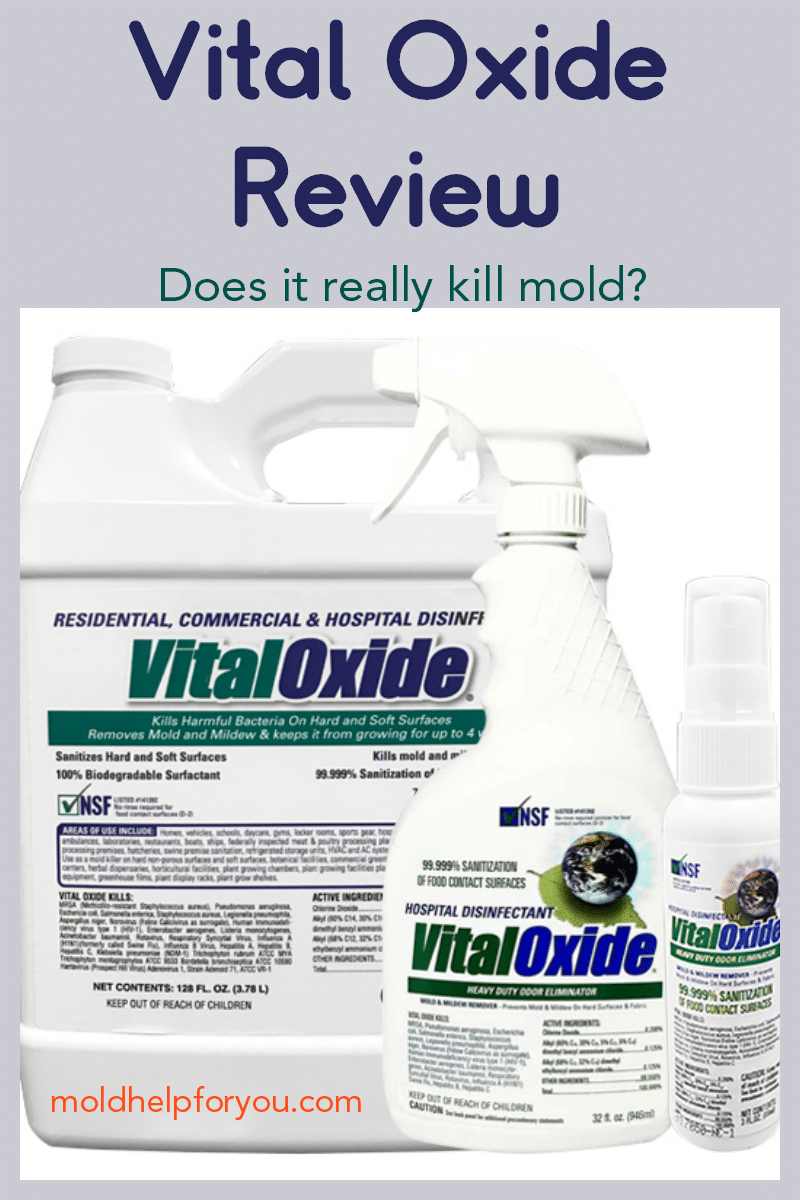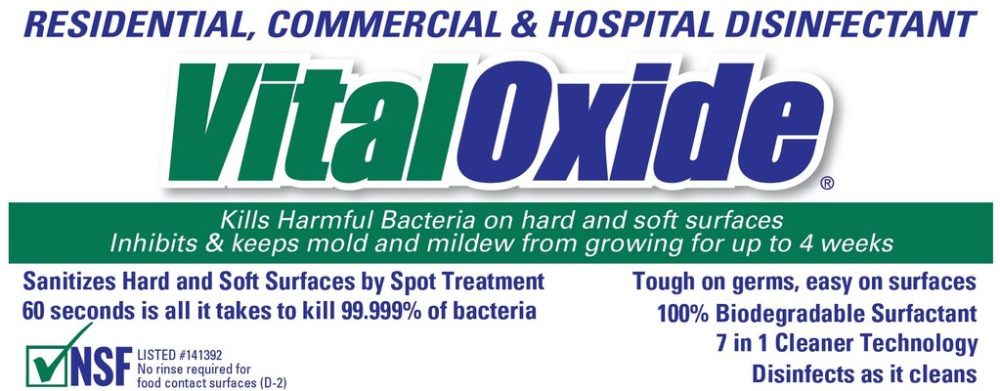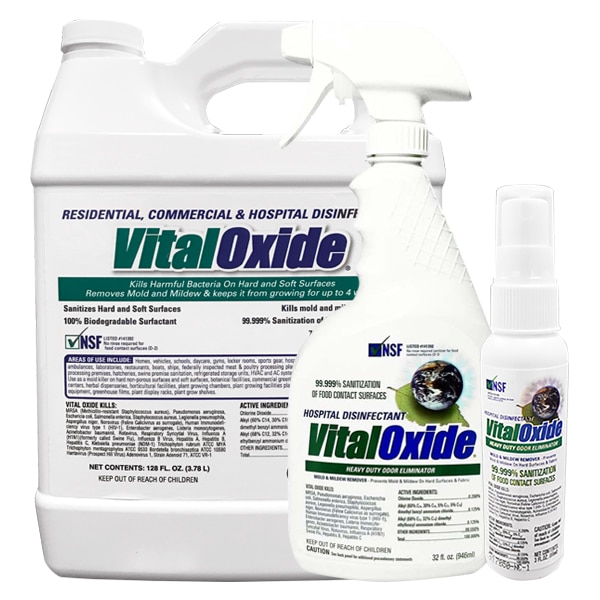Vital Oxide Review
This post may contain affiliate links. Read our full disclosure.
Vital Oxide is an interesting product in that it utilizes oxidation to disrupt and prevent mold formation. I spent quite a bit of time looking into the technology to get a better understanding on whether or not this would really remove mold.

How Vital Oxide Works
Vital Oxide kills germs in two primary ways. With bacteria it alters certain amino acids and the RNA of the bacteria to cause a breakdown of the cell wall and eventual death of the organism. When it comes to viruses, Vital Oxide essentially oxidizes amino acids to prevent the formation of proteins and causes the virus to die.
It acts as a free radical that seeks out and oxidizes mold and other microorganisms, ultimately disassociating into simple table salt.
Vital Oxide works by oxidation, not by masking of odors. It kills microbes by chemically altering certain amino acids that contain sulfur. The amino acids are important building blocks in the proteins that help to form cell walls. When these proteins are destroyed, the cell wall ruptures and the organism dies.
In the chemical reaction, Vital Oxide takes on an electron from the amino acid and reverts back to a chlorite ion. The amino acid gives up an electron and giving up an electron is what chemists call oxidation.
The company states that you can destroy mold on contact with Vital Oxide’s powerful yet safe formulation. In addition you can prevent mold formation by using Vital Oxide to pre-treat areas that are susceptible to mold and mildew. Vital Oxide inhibits spore germination for up to seven months, even in the most saturated areas.
A study out of the University of Tulsa proved the effectiveness of Vital Oxide for controlling fungal contamination on building materials. It showed that Vital Oxide:
- Inhibited spore germination of test fungi
- Inhibited the growth of fungi on sheetrock and ceiling tiles with pretreatment
- Was effective in stopping fungal growth even in saturated conditions inhibited growth of Stachybotrys for seven months following treatment
You can read the entire study here. Don’t worry – it isn’t too long and it is actually pretty easy to understand.
Vital Oxide has three dilution ratios:
- At full strength, it’s a hospital strength disinfectant as well as heavy duty odor eliminator and mold & mildew killer.
- Diluted at a 5:1 ratio, it sanitizes carpets and fabrics. It’s compatible with most synthetic carpeting and commercial cleaning machines.
- And at a 9:1 ratio, you can use it for sanitization on food contact surfaces – no rinse required, so it’s great for daily use!

Active Ingredients
- Chlorine dioxide (0.2%)
- Alkyl dimethyl benzyl ammonium chloride (0.125%)
- Alkyl ethylbenzyl ammonium chloride (0.125%)
Let’s talk about Chlorine Dioxide
The stabilized CLO2 in Vital Oxide is not the same chemical as chlorine. Chlorine and sodium chloride are two VERY different substances.
Chlorine dioxide is a soluble gas with the advantage that it penetrates through the biofilm and removes it. This actually makes it a legitimate mold remover. You can read more about mold and biofilm here.
Pros of Vital Oxide
- Independently lab tested to confirm pathogens removed (you can learn more about that here)
- Breaks down to a simple salt
- It doesn’t contribute to the formation of mutating “super bugs”
- No volatile organic compounds (VOCs)
- Fragrance free
- Safe for use on food surfaces
- Vital Oxide 32oz bottle is constructed out 40% recycled PETE plastic. PETE plastic is more practical than many other plastic applications for recycling.
- Can be used in a fogger
- No rinsing or wiping required
- Shelf life of two years
- No special safety equipment required when using it
- 100% biodegradable
Cons of Vital Oxide
- Less effective on porous surfaces
- Won’t touch mycotoxins
Toxic or Non-Toxic
Vital Oxide is has been rated by the EPA as a Category 4 (the safest rating the EPA has), which states – no exposure warnings required on label. Chlorine dioxide has been successfully stabilized, thereby making it very safe.

Final Verdict
Vital Oxide prevented Stachybotrus for seven months when used as a pretreatment. That is very impressive in my book. I like how this product works because tackling those biofilms is a huge part of mold prevention and control.
When I used it I didn’t “see” anything exciting happen but such is the case with this type of product. I did feel like my quartz kitchen counter tops were extra shiny though which means it got up some gunk I never knew was there.
I would not hesitate to recommend this product!

Do you know anything about Sniper? Also uses chlorine dioxide.
That is not one I have reviewed yet. I have had a very difficult time obtaining the list of “other ingredients.” In addition, they never responded to my request for the material safety data sheet.
I have been using a product named Concrobium Mold Control.
Would be safe to use Vital Oxide on a surface where I previously used Concrobium Mold Control?
As well, if I use Vital Oxide on a surface would be safe to later apply Concrobium Mold Control to that same surface?